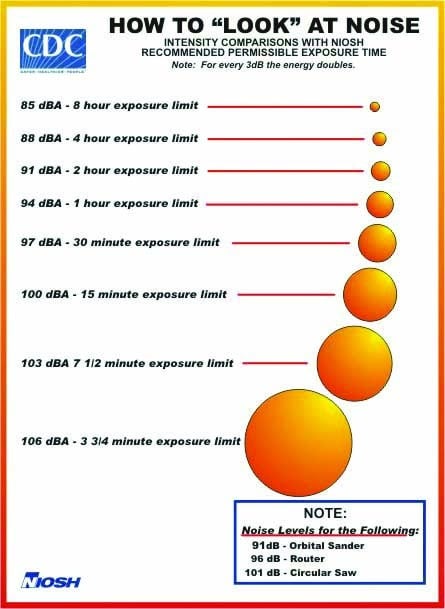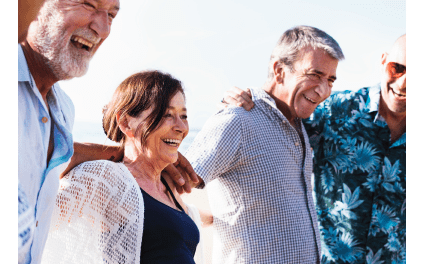Hearing Preservation | September 2020 Hearing Review
A global perspective on the challenges of hearing loss prevention and regulation
The “Make Listening Safe Workgroup” is an initiative of the World Health Organization (WHO) in the framework of the World Hearing Forum, and is committed to create a world where nobody’s hearing is put in danger due to unsafe listening. This article focuses on standards for safe listening in the industry for personal music players and for personal amplifiers. For each of these three focus areas, WHO estimates the worldwide population at risk to be:
- 466 million persons with disabling hearing loss (6.1% of the world’s population).1
- 16% of disabling hearing loss in adults is attributable to occupational noise exposure.2
- 1.1 billion teenagers and young adults are at risk of hearing loss due to the unsafe use of personal audio devices and exposure to damaging levels of sound at noisy entertainment venues.3
By Masahito Kawamori, Lidia Best, and Mark Laureyns
The first known regulation on safe listening dates back as far as the 6th century BC, when the Greek colony of Sybaris (now southern Italy) decreed that tinsmiths and potters had to live outside the city because of the noise they made.4 The first record on hearing loss caused by industry noise dates back to 1830 when Fostbroke discussed the hearing loss of blacksmiths. Aram Glorig5 stated that, as late as 1935 (ie, prior to the Walsh-Healy Public Contracts Act of 1936), audiometric studies on hearing loss due to noise were practically nonexistent.
Select Landmarks in Global Hearing Loss Prevention
For historical perspective, here is a brief look back at some of the key landmark publications and regulations pertaining to “safe listening” and hearing preservation. Authors’ note: The origins of noise standards have a long and complicated history, and due to space restrictions are greatly simplified here (eg, see Franks6 and Goldsmith4).
1950: Karl Kryter publishes a monograph “The Effects of Noise on Man” in the Journal of Hearing and Speech Disorders7 (republished in book form in 1970), with a specific chapter on “Deafening Effects of Noise” (Figure 1) in which he concludes that “continued repeated exposures of extended periods (years) to intense noise from machinery may result in partial but permanent deafness…The maximum safe intensity at which no deafening effect will occur is probably in the neighborhood of 85 dB above 0.0002 dyne/cm² for critical bands of noise.”

1957: In Noise Control, a “Guide for Conservation of Hearing in Noise” is published.8 This document was developed by the Subcommittee on Noise in Industry, the Committee on Conservation of Hearing, and the American Academy of Ophthalmology and Otolaryngology. In this document, the “Duration and Distribution of Exposure During Workday and Work-Life” is promulgated as a key aspect for evaluating the impact of noise on hearing.
1971: Just after the passage of the US Occupational Safety and Health Act of 1970—which created the Occupational Safety and Health Administration (OSHA) and the National Institute for Occupational Safety and Health (NIOSH)—the first International Standards Organization (ISO) publication on occupational noise is published (ISO 1999 “Acoustics–Assessment of occupational noise exposure for hearing conservation purposes”). This standard has been reviewed many times, with the latest version issued in 2018 and maintained as ISO 1999-2013 “Acoustics–Estimation of noise-induced hearing loss” (Figure 2).9 Noise exposure level over time is the main criterium used in this standard, and the studies referenced in the standard looked at the effects of noise on participants’ pure-tone audiograms. The standard takes a dBA 8-hour time-weighted average (TWA8) as its reference. It is clear from the standard that the risk of noise-induced hearing loss significantly increases from an exposure of 85 dBA (ie, LEX,8h/day) and higher (Figure 3).


1972: The first NIOSH guidelines are published (Figure 4). In these guidelines,10,11 the concept of daily dose is used, and a table for “Combinations of noise exposure levels and durations that no worker exposure shall equal or exceed” is displayed, with exposure levels of:
- 85 dBA – 8 hours
- 88 dBA – 4 hours
- 91 dBA – 2 hours
This concept is based on the energy equivalence principle; when you double the energy, you need to reduce the exposure time by half.
2003: The European Commission publishes the EU Noise at Work Regulations (Directive 2003/10/EC, Figure 5),12 which sets three action levels:
- Lower exposure action values (at 80 dBA LEX,8h): The employer shall make individual hearing protectors available to workers;
- Upper exposure action values (at 85 dBA LEX,8h): Individual hearing protectors shall be used. The individual hearing protectors shall be so selected as to eliminate the risk to hearing or to reduce the risk to a minimum;
- Exposure limit values (at 87 dBA LEX,8h): Under no circumstances shall the exposure of the worker exceed the exposure limit values.


Safe Listening for Personal Audio Systems
In 2010, the International Technical Commission (ITC) published the first standard, IEC 62368-1, for personal audio systems: “Audio/Video, Information and Communication Technology Equipment Part 1: Safety Requirements” (Figure 6)13. This focuses on personal music players, with an output of 85 dBA or lower considered safe. The LAeq,T (ie, the A-weighted equivalent continuous sound level) output is to be lower or equal to the relevant RS2 sound output value of 100 dBA.
Unfortunately, the use of a max output level has had the unintended effect that more and more compression was used for recorded music files. Although the max output value of 100 dBA (LAeq,T) was not exceeded when the personal music player was tested, the exposure level could easily exceed 85 dBA or more, which could result in unsafe listening.

In the subsequent ITU and WHO standard H.870 “Guidelines for safe listening devices/systems” (Figure 7)14 published in August 2018, the focus was on evaluating weekly sound-dose exposure, which was based on the EN 50332-3 standard “Sound system equipment: headphones and earphones associated with personal music players–maximum sound pressure level measurement methodology, Part 3: measurement method for sound dose management.”

These standards recommend weekly sound dose being limited to the equivalent of 80 dBA for 40 hours/week. For the higher safety level (ie, for children and/or sensitive users), the weekly sound dose should be limited to the equivalent of 75 dBA for 40 hours/week (Table 1b).
Additionally, ITU and WHO recommend that Personal Audio Systems be equipped with a monitoring function that sets the above exposure as a 1-week “sound allowance,” and the display method should be designed in an easy-to-understand manner. The device should also be able to provide the user with a suitable method for limiting volume. This refers to a feature where a message will be given before or when users reach 100% of their weekly sound allowance. The user will have the option to “continue listening” if they do not wish the device volume reduced. If the message is not acknowledged, a default setting will reduce the volume output to below the predetermined level based on the mode selected (eg, 80 dBA or 75 dBA).

Since October 2019, you can find the weekly dose of sound exposure in the Health app on iPhones. We hope other smartphone and headphone manufacturers will follow Apple’s lead.
In 2018, IEC 62368-1 was reviewed and the concept was introduced that weekly sound dose should be limited to the equivalent of 80 dBA for 40 hours/week as a standard safety level added to the Audio/video (Part 1) safety requirements.
Safe Listening with Personal Amplifiers
In December 2015, the European Federation of Hard of Hearing People (EFHOH) and the European Association of Hearing Aid Professionals (AEA) published their “Paper on the potential risk of using ‘Personal Sound Amplification Products’ PSAPs”15 in which 27 personal sound amplifiers (PSA) commercially available in Europe during 2014 were analyzed (Figure 8). All 27 devices had a maximum output level of more than 120 dBSPL; 23 had an output level exceeding 125 dBSPL, and 8 exceeded 130 dBSPL. None of the products had a limiter of the maximum power. Furthermore, it is very difficult for the end user to understand the difference between a “hearing aid” (designed for the medical purpose of compensating for a hearing loss) and PSAP (a sound amplifier), with the latter shown to provide very high and dangerous sound levels. Both EFHOH and AEA called on all relevant stakeholders to ensure that PSAPs are not used when they exceed unsafe sound levels.

This alarming report initiated the ITU standard on personal amplifiers. In 2017, the Consumer Technology Association (CTA) published the ANSI/CTA standard 2051 on “Personal Sound Amplification Performance Criteria”16 (Figure 9). The safety aspects in this standard state that “The maximum OSPL90 output level shall not exceed 120 dBSPL measured in a 2cc coupler.” This standard exceeds the safety level set by IEC 62368-1 (ie, the LAeq,T to be lower or equal to the sound output value of 100 dBA) by more than 15 dB if we correct 5 dB for the conversion dBSPL to dBA.

In 2019, ITU published ITU-T H.871 (Figure 10),17 which can be considered a companion standard to H.870 and describes safety requirements for PSAs, including both PSAPs and personal sound amplification apps (PSAA). Currently there is no other international standard for PSAs. Thus, this standard is needed to ensure that these devices, which are freely available in the market to anyone, are safe for users and do not further damage users’ hearing.
For PSAs with the capacity to measure weekly dose, it is required that weekly maximum sound dose needs to be less than 80 dBA for 40 hours. For example, at 89 dBA, the exposure time is limited to 5 hours/week. For other exposure levels, a linear intrapolation and extrapolation applies. According to ITU-T H.870 and H.871, measurements taken of the dynamic range of sound should be accounted for and the reasonably foreseeable use of the products. When PSAs do not have the capacity to measure weekly sound dose, the maximum output of the device needs to be permanently limited to 95 dBA; a user then is unlikely to use the device at a level higher than 80 dBA since the dynamic range of speech has a crest factor of 12 to 17 dB. Further, PSA’s need to provide adequate warnings in advertisements, user guides, and packaging detailing the risks of further damaging the user’s hearing as a result of using the device and provide information to users showing how to avoid these risks.

Conclusions
In the current standards, the availability of hearing protection at work, for personal music players, and personal amplifiers, the exposure should be less than 80 dBA for 40 hours. Although only setting a maximum output level is not advisable (because this can result in higher compression in the source music file or in the amplification), those PSAs that don’t have the capacity to measure weekly dose need to be permanently limited to 95 dBA.

Correspondence can be addressed to Mark Laureyns at: [email protected].
Citation for this article: Kawamori M, Best L, Laureyns M. Standards for “safe listening”: past, present, and future. Hearing Review. 2020;27(9):22-25.
References
1. World Health Organization (WHO). Estimates. https://www.who.int/deafness/estimates/en.
2. World Health Organization (WHO) European Centre for Environment and Health. https://www.who.int/quantifying_ehimpacts/publications/e94888/en/. Burden of Disease from Environmental Noise: Quantification of Healthy Life Years Lost in Europe. Bonn, Germany: WHO;2011.
3. World Health Organization (WHO). 1.1 billion people at risk of hearing loss. February 27, 2015. https://www.who.int/mediacentre/news/releases/2015/ear-care/en.
4. Goldsmith M. Discord–The Story of Noise. Oxford, UK: Oxford University Press;2012.
5. Glorig A. The problem of noise in industry. Am J of Public Health. 1961;51(9):1338-1346.
6. Franks J. Historical highlights in the evolution of national standards for occupational safety and health. Hearing Review. 1999;6(9):18-27.
7. Kryter KD. The effects of noise on man. The Journal of Speech and Hearing Disorders. 1950:1-95.
8. House HP, Hoople GD, Davis H, et al. Guide for conservation of hearing in noise. Noise Control.1957;3(23).
9. International Standards Organization (ISO). ISO 1999:2013: Acoustics–Estimation of noise-induced hearing loss. https://www.iso.org/obp/ui/#iso:std:iso:1999:ed-3:v1:en.
10. National Institute for Occupational Safety and Health (NIOSH). Criteria for a recommended standard: Occupational exposure to noise. Cincinnati, OH: US Department of Health, Education, and Welfare, Health Services and Mental Health Administration; National Institute for Occupational Safety and Health (NIOSH); DHEW (NIOSH) Publication No. HSM 73-11001;1972.
11. National Institute for Occupational Safety and Health (NIOSH). Criteria for a recommended standard: Occupational Noise Exposure-Revised Criteria 1998. https://www.cdc.gov/niosh/docs/98-126/pdfs/98-126.pdf. Cincinnati, OH: US Department of Health and Human Services, Centers for Disease Control and Prevention (CDC), NIOSH;1998.
12. European Agency for Safety and Health at Work. EU Noise at Work Regulations “on the minimum health and safety requirements regarding the exposure of workers to the risks arising from physical agents (noise) (Directive 2003/10/EC). https://osha.europa.eu/en/legislation/directives/82. Brussels, Belgium: EU-OSHA.
13. International Electrotechnical Commission (IEC). IEC 62368-1:2018. Audio/video, information and communication technology equipment, Part 1: Safety requirements. https://www.iecee.org/dyn/www/f?p=106:49:0::::FSP_STD_ID:27412. October 4, 2018.
14. International Telecommunication Union (ITU). H.870–Guidelines for safe listening devices/systems. https://www.itu.int/rec/T-REC-H.870-201808-I/en. August 29, 2018.
15. European Association of Hearing Aid Professionals (AEA) and European Federation of Hard of Hearing People (EFHOH). Paper on the potential risk of using “Personal Sound Amplification Products” PSAPs. https://www.aea-audio.org/portal/index.php/aea-action-plan/prevention. December 2015.
16. Consumer Technology Association (CTA). ANSI/CTA-2051–2017 ANSI/CTA Standard-Personal Sound Amplification Performance Criteria. https://webstore.ansi.org/standards/ansi/cta20512017ansi.
17. International Telecommunication Union (ITU). H.871–Safe listening guidelines for personal sound amplifiers. https://www.itu.int/rec/T-REC-H.871/en. July 29, 2019.




